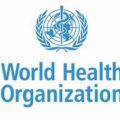Poor sanitation has a range of negative impacts on society and the economy, from causing debilitating and deadly diseases via the contamination of drinking water sources and food with pathogen laden human waste, to associated losses in productivity due to sickness and toilet access, and increased healthcare costs from caring for the sick. Equally important, though difficult to measure in dollar terms, is the risk of attack faced by women and girls who must find a secluded place away from their homes to relieve themselves, children and young adults missing out on education because there is nowhere private to manage menstruation with dignity, or children suffering from malnutrition caused by diarrheal disease.
Sustainable Development Goal target 6.2 calls for adequate and equitable sanitation for all. The target is tracked with the indicator of “safely managed sanitation services” – use of an improved type of sanitation facility that is not shared with other households and from which the excreta produced are either safely treated in situ, or transported and treated off-site.
Key facts
- In 2017, 45% of the global population (3.4 billion people) used a safely managed sanitation service.
- 31% of the global population (2.4 billion people) used private sanitation facilities connected to sewers from which wastewater was treated.
- 14% of the global population (1.0 billion people) used toilets or latrines where excreta were disposed of in situ.
- 74% of the world’s population (5.5 billion people) used at least a basic sanitation service.
- 2.0 billion people still do not have basic sanitation facilities such as toilets or latrines.
- Of these, 673 million still defecate in the open, for example in street gutters, behind bushes or into open bodies of water.
- At least 10% of the world’s population is thought to consume food irrigated by wastewater.
- Cropland in peri-urban areas irrigated by mostly untreated urban wastewater is estimated to be approximately 36 million hectares (equivalent to the size of Germany)
- Poor sanitation is linked to transmission of diseases such as cholera, diarrhea, dysentery, hepatitis A, typhoid, and polio and exacerbates stunting.
- Poor sanitation reduces human well-being, social and economic development due to impacts such as anxiety, risk of sexual assault, and lost educational opportunities.
- Inadequate sanitation is estimated to cause 432 000 diarrhoeal deaths annually and is a major factor in several neglected tropical diseases, including intestinal worms, schistosomiasis, and trachoma. Poor sanitation also contributes to malnutrition.
Importance of sanitation
- Improved Health Conditions and Low Health expenses
Over recent decades, compelling evidence has been gathered that significant and beneficial health impacts are associated with improving water and sanitation facilities. The routes of pathogens to affect health via the medium of water are many and diverse. Five different routes of infection for water-related diseases are distinguished: water-borne diseases (e.g. cholera, typhoid), water-washed diseases (e.g. trachoma), water-based diseases (e.g. schistosomiasis), water-related vector-borne diseases (e.g. malaria, filariasis, and dengue), and water-dispersed infections (e.g. legionellosis). Water-borne and water-washed diseases are responsible for the greatest proportion of the direct-effect water and sanitation-related disease burden.
Sanitation interventions can provide direct health benefits to a community by reducing public exposure pathways to pathogens contained in fecal matter. In the most recent meta-analysis of 25 sanitation interventions, Norman et al. (2010) concluded that sanitation interventions that installed sewer connections resulted in a 30% reduction in diarrheal episodes in the targeted community, or up to 60% when starting sanitation conditions were very poor.
- Reduction in mortality rates linked to Poor Sanitation
The burden of diarrheal diseases related to water, sanitation, and hygiene. Water, sanitation, and hygiene were responsible for 829 000 deaths from diarrhoeal diseases. Poor sanitation reduces human well-being and better water, sanitation, and hygiene could prevent the deaths of 297 000 children. Improved sanitation reduces diarrhea morbidity by 32%. Hygiene interventions including hygiene education and promotion of handwashing can lead to a reduction of diarrhoeal cases by up to 45%.
- Social and economic benefits
In addition to its impact on health, improved sanitation generates both social and economic benefits. Householders understand these wider benefits but scientists have only recently begun to study individuals’ motivations for improving sanitation and changing sanitation behavior. The economic benefits of improved sanitation include lower health system costs, fewer days lost at work or at school through illness or through caring for an ill relative, and convenience time savings (time not spent queuing at shared sanitation facilities or walking for open defecation).
Other possible economic benefits related to health improvement. An implication for the health system is that there will be less health workers ill from diarrhea, thus reducing disruption of the health service caused by staff absence. Similarly, the reduction of productive days lost due to less ill-health in the workforce will be an important benefit to agriculture and companies/industry.
- Time-Saving
Beyond any argument, one of the major benefits of sanitation improvements is the time saving associated with better access. Time savings occur due to, for example, the relocation of a well or borehole to a site closer to user communities, the installation of piped water supply to households, closer access to latrines, and shorter waiting times at public latrines. These time savings translate into either increased production, improved education levels, or more leisure time. SEE TYPES OF SANITATION





